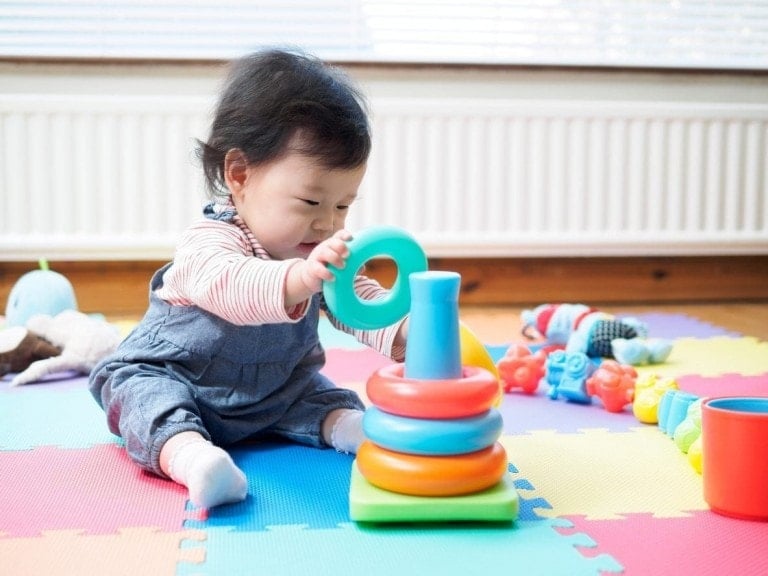It’s time for your baby to nap, which means you can use this much-needed time to get stuff done or maybe even enjoy a quiet moment alone. That is, of course, if your baby takes long and predictable naps. Adequate day sleep is important for a baby’s development and plays a crucial role in promoting learning, memory, and growth. And for babies under one year of age, the recommendation for total day sleep can range anywhere between 3-6 hours. But unfortunately, many babies struggle with short and inconsistent naps, which can leave parents feeling frustrated, confused, and without that alone time they planned on as they try to figure out how to stop the cycle of cat-napping.
If this sounds familiar, here are five reasons that will help you understand why your baby might be stuck in this overtired cycle and how you can help extend their naps.
5 Reasons Your Baby is Taking Short Naps
1. Their sleep environment isn’t promoting sleep.
Two things are essential to promote good sleep in the first year of life and beyond. The first is to have your baby’s room dark for all naps and night sleep. The second is that the room is quiet except for white noise. Keeping the room dark helps provide a calm environment for sleep but can be difficult to achieve during the day. So I recommend using blackout shades to block out the natural light. These can also help if your baby is struggling with early risings in the morning.
2. Your baby is overtired when putting them down for a nap.
It seems logical that the longer you keep your baby awake, the more tired they will be. This should lead to a nice long nap, right? But this is one of the biggest myths regarding pediatric sleep. Babies can easily become overtired when they are kept awake longer than they can handle. You can easily avoid this by following “awake windows,” which will vary based on your baby’s age. Below you will find the ranges that I recommend for each age group within the first 18 months of life.
- 0-3 months: 60-90 minutes
- 4-6 months: 2-2.5 hours
- 7-9 months: 2-3/3.5 hours
- 10-15 months: 2.5-4 hours
- 16-18 months: 4-5.5 hours
3. Your baby is unable to connect sleep cycles.
For babies, one and under, their sleep cycles are between 40-45 minutes. This is why we often see babies take naps around this length of time. But there are a couple of ways that you can help your baby learn to transition from one sleep cycle to the next.
One way to do this is by holding your baby to extend the nap. But wait, won’t this create a bad habit? Actually, no, as long as it is done temporarily. You can do this by choosing one nap of the day to safely hold your baby if this helps them get a longer nap. Or you can do this by holding your baby once they wake up from a short nap.
Another option is to go in and gently wake your baby up before their usual waking point in the nap by nudging their lip or stroking their head, and once they start to stir, you can immediately soothe them back down. While this doesn’t work for every baby, it can be effective in many situations.
4. Your baby is unable to self-soothe.
If your baby is four months or older and struggles to self-soothe, this can affect their ability to take long naps. It is normal for babies to frequently arouse during naps and throughout the night, especially when they come out of a sleep cycle. Babies who can self-soothe can fall back asleep after partially or even fully waking up. But if your baby doesn’t yet have this skill, they may fully wake up and start crying as they struggle to fall back asleep.
In this case, you can try to give your child a few more minutes before responding initially. Then intervene once they start to escalate and it is clear they need your help. But once you intervene, do so first without picking your baby up, and instead stroke their hand, their back, replace their pacifier, and shush in their ear. This is far less stimulating than immediately picking your baby up and will also allow them to calm back down without needing to be held. Of course, you may need to pick your baby up to calm them down in many situations. But the more you practice this, the more your baby will start to grasp the concept of self-soothing.
5. Your baby is uncomfortable.
Like any of us, babies can become uncomfortable during sleep and feel too warm or cold. Or they could be stuck in an uncomfortable position that they can’t get out of. But unlike you or I, babies cannot move themselves out of a comfortable position or readjust. Unfortunately, it’s hard to know if this is why they are waking up or crying out.
Thankfully with the use of technology and video monitors, you can often see if your baby is stuck, broken out of their swaddle, or maybe ended up on their tummy. If this is the case, it is completely fine to intervene to help your baby get comfortable again. Then leave the room once they have settled to encourage a longer nap.
If you address all of these areas but still find that your baby is taking short naps, don’t worry. Your baby won’t be stuck in this short nap cycle forever! It is important to remain consistent and continue to prioritize naps. If you feel lost or overwhelmed during this process, you can always reach out to us for one-on-one guidance.



































